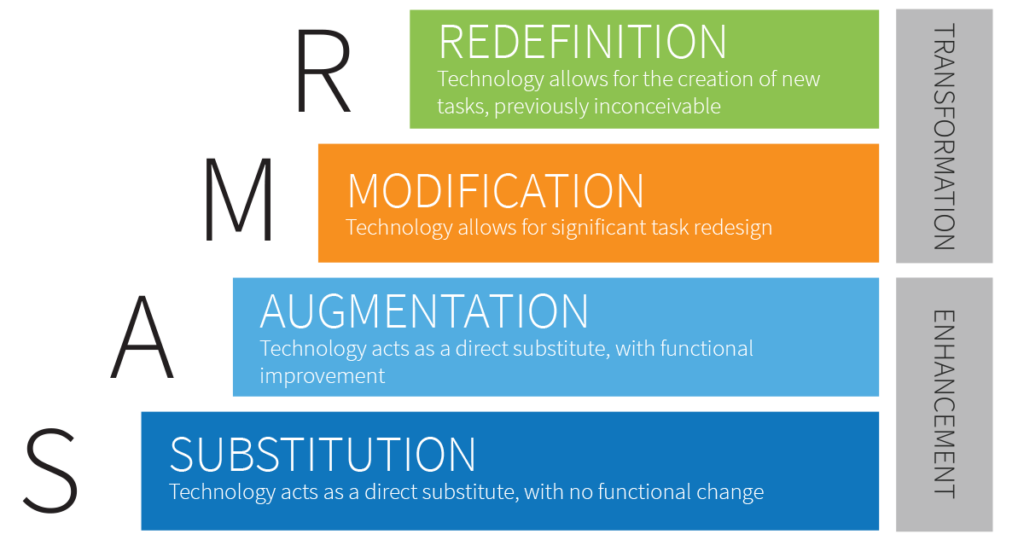Technology Selection
It is easy to feel overwhelmed when trying to determine which learning technology to use for your circumstance. There are an ever-increasing number of technologies vying for our attention and many of them seem to offer similar functionality. You may feel pressure to adopt particular technologies from your institution, colleagues, vendors, or even your students.
How do you determine which technology is best suited for your context and needs? What sorts of questions should you be asking yourself? It is important to think critically about what you are trying to achieve. Are you trying to deliver content, facilitate interaction, provide feedback, or conduct an assessment? You may also need to consider questions surrounding accessibility, costs, and support services.
Below you will find a theoretical framework that can help guide you in evaluating the affordances, limitations, and appropriateness of learning technologies to assist you with their selection and application.
SECTIONS Framework
The SECTIONS framework, originally developed by Bates and Poole (2003) and later revised by Bates (2019), is a practical framework comprised of eight components designed to assist educators make informed choices when evaluating, selecting, and applying learning technologies in alignment with their pedagogical goals. The framework encompasses a holistic approach, asking pedagogical, organizational, and technological questions that can be relevant at the classroom, faculty, or institutional level. As such, you may not be able to answer all the questions. The framework is not intended to provide a cumulative score, but rather a set of guiding questions to help you decide the appropriateness and potential of learning technologies for your specific needs.
Bates (2019) recommends using the framework through a process of inductive reasoning,
The infographic below details the components of SECTIONS and some of the guiding questions you may want to consider. For a more in-depth examination of each component, refer to “Choosing and Using Media in Education” in Teaching in a Digital Age (3rd Edition).
Adapted from Bates (2019)
Technology Integration
Taking advantage of the affordances of learning technologies offers the potential to provide more immediate feedback, create authentic assessments, facilitate collaboration, and create new learning experiences. These new learning experiences can help develop 21st century and discipline-specific digital literacy skills in learners, as well as offer more personalized and networked learning opportunities, enabling learners to be active participants in knowledge construction inside and outside of the classroom.
SAMR Model – Overview & Examples
The SAMR Model, developed by Dr. Ruben Puentedura, is a framework to describe different degrees of technology integration. The model is divided into four levels: Substitution, Augmentation, Modification, Redefinition. The first two levels, substitution and augmentation, are described as an enhancement to the teaching and learning method. The modification and redefinition levels aim to transform the teaching and learning experience. Watch Introduction to the SAMR Model (opens in a new tab) for a video overview.

In the video below, Dr. Ruben Puentedura describes how educators can apply the model’s concepts in their teaching practice.
SCOR
Concluding Remarks
The SAMR Model can help guide you in thinking critically about the level of technology integration in your teaching practice and the potential use of that technology. It can help you reflect on whether you are taking advantage of the affordances of technology to create transformative learning experiences, or merely enhancing current methods. With that said, keep in mind that the goal is not necessarily to always strive for redefinition. Substitution or augmentation may be perfectly suitable for your context.
Although Dr. Puentedura associates later stages of the SAMR model to Bloom’s higher order thinking skills, he notes, “It is important to realize that this association between SAMR and Bloom’s Taxonomy is not a necessary—or even habitual—coupling. Thus, it is possible to use extremely powerful redefinition-level approaches to make certain types of memorization tasks possible; conversely, it is also possible to undertake novel create-type tasks that only make basic substitution/augmentation use of the technology” (Puentedura, 2014). The model is commonly depicted with each stage building on the previous, beginning with Substitution on the bottom and Redefinition on the top, but it is more useful to think of the model as a continuum. Deciding on which level is appropriate depends on the learning outcome of the task and the reasoning for selecting a particular technology.
Adapted from University of Calgary SAMR and TPACK: Two Models to Help With Integrating Technology Into Your Courses under Creative Commons BY-NC-SA 4.0 License.
Further Resources
References
Bates, Tony (2019). Teaching in a Digital Age: Guidelines for Designing Teaching and Learning (2nd edition). BCcampus. https://pressbooks.bccampus.ca/teachinginadigitalagev2/.
Puentedura, R. (2014, September 24). Find out how you can use technology to engage students in rich learning experiences. [Blog post]. Retrieved from https://www.commonsense.org/education/articles/samr-and-blooms-taxonomy-assembling-the-puzzle/.